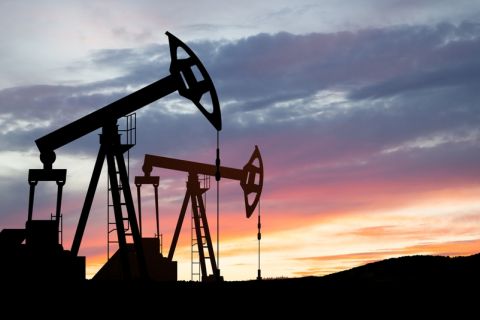Ask any industry pundit what major challenges face the oil and gas industry, and he or she will most likely bring up the “Great Crew Change,” the “graying of the industry,” workforce shortages, and a simple question: When everyone retires, who’s going to be left?
The answer is that there are plenty of people interested in a career in oil and gas and many more who might be interested if they had more information about career opportunities. To lure these potential employees, oil and service companies are pulling out all the stops.
Recruiting in the trenches
Getting a candidate interested in a job in the energy industry is step one; getting that candidate to choose one company over another is a very important step two. BP is working diligently on both objectives. The company plans to double its spending on exploration worldwide over the next few years, creating many new opportunities. Its recent discoveries in the North Sea, for example, will create 3,000 jobs in the UK alone. It also is looking to hire 1,000 graduates globally and offer 500 internships. This comes after a successful 2011, where as of press time, the company was on track to hire 2,500 new recruits.
The company has identified two key areas of particular need – specialist engineers, particularly subsea specialists, deepwater drillers, and process safety managers; and specialist geoscientists, particularly for EOR.
The company has undertaken a comprehensive and aggressive strategy to meet its recruiting goals. According to Simon Drysdale, head of Human Resources, Upstream, for BP, part of this strategy is to make the company’s work environment visible to potential candidates through discovery days, internships, and an advertising campaign that showcases employees at Bp.com/ourstories? .
One of the most successful aspects of this plan is the Ultimate Field Trip. “This is a competition that gives UK undergraduates the opportunity to tackle a real-world energy challenge,” he said. “It showcases their talents and gives them a feel for the work they could be doing with BP.” This year’s prize was a field trip to Thunder Horse, BP’s largest deepwater oil field.
Another recent example is the company’s donation of more than 300 Gb of high-resolution geophysical data to 14 US universities. The data were originally gathered and developed for operational planning at four BP-operated deepwater Gulf of Mexico fields. Data files include multi-beam echo-sounder data for bathymetric mapping, sides-can sonar for seabed imaging, and sub-bottom profiler records for analysis of shallow marine sedimentary layers.
“This project is a way to help the universities continue academic research and develop specialized expertise among students, technicians, and researchers in the area of offshore development while giving BP the opportunity to strengthen relationships with geosciences researchers and potential recruits,” Drysdale said.
Other programs include the BP Energy Play, a program established to promote awareness of the energy trading sector; BP Discovery Days, allowing university students to spend a full day at BP to see if their skills and personality fit; BP Educational Services, a resource center with tools ranging from interactive teaching and lesson plans to “Cool Creation” competitions; and Schools Link, a program now covering 194 schools in the UK allowing BP employees to work with local schools to enhance curriculum. Getting them in the door
Oil companies are not in the business of custom-designing jobs for their new workers, but they are mindful of the needs of their recruits, particularly younger employees. “When people talk about younger people joining the workforce, they often cite their desire to be given responsibility very early in their careers,” Drysdale said. “They get that through our Challenger program. In addition, we have a competitive set of flexible working practices that are available to all staff.”
Concerns about the Deepwater Horizon incident also are not glossed over. Drysdale said most queries he gets related to the disaster focus on the financial health of the company and hence its career opportunities. “We have a strong story to tell in relation to our exploration success and our projects portfolio that will create new and challenging career opportunities for our people for many years to come,” he said.

Ultimate Field Trip winners were rewarded with a visit to Thunder Horse, BP’s largest deepwater platform. (Image courtesy of BP)
Keeping them engaged
Once a new employee has joined the company, he or she undergoes rigorous assessment to help determine deployment and development. “The assessment tools we use in our graduate hiring process enable our managers to rigorously assess candidates for the skills and knowledge to do the job, the behaviors required that enable them and others to perform, and the drivers and attributes that underpin performance,” he said.
Technical skills and knowledge are assessed using tests and case studies to simulate jobs and activities, he said. Behaviors are assessed using a structured interview, and drivers and attributes are assessed using a personality questionnaire and aptitude evaluation. Additionally, employees are screened for leadership roles by third parties, typically clinical psychologists, to measure experience and responses against the company’s values and behaviors.
After the screening comes learning and development. The Challenger Program is a three-year training program for new hires with less than three years of experience in the industry. It provides them with practical experience and formal on-the-job training by sending them through several rotations in various business units, including engineering, finance, wells, and subsurface in different domestic and international locations. Team-building activities, leadership development, and mentoring from senior BP employees also are part of the program.

New employees might find themselves working on a seismic acquisition vessel early in their careers. (Image courtesy of ION Geophysical)
“Our graduates find themselves working in a real role with real responsibilities, e.g., on a drilling platform or a seismic survey boat, very early in their careers,” Drysdale said.
Additionally, the eXcellence Program is a comprehensive process to guide employees through the first 10 years of their careers, and Accelerated Development Programs support the transition from discipline specialist to a technical leadership role. Most of these are for existing team members, but they can sometimes be offered to new hires as well.
“Whatever level employees join, they will create a development plan with their line manager with input from their Organizational Capability manager to ensure they get the right development opportunities to meet their career and personal goals,” he said. “Organizational Capability mangers manage deployment within the business. They manage the business needs against the individual development plans to match openings with individuals ready for their next challenge.”
Recommended Reading
What's Affecting Oil Prices This Week? (March 4, 2024)
2024-03-04 - For the upcoming week, Stratas Advisors expect the price of Brent will move sideways and will struggle to break through $85.
What's Affecting Oil Prices This Week? (Feb. 26, 2024)
2024-02-26 - Stratas Advisors forecast that global crude production will be essentially unchanged from 2023, which means that demand growth in 2024 will outpace supply growth.
Oil Dips as Demand Outlook Remains Uncertain
2024-02-20 - Oil prices fell on Feb. 20 with an uncertain outlook for global demand knocking value off crude futures contracts.
Oil Rises After OPEC+ Extends Output Cuts
2024-03-04 - Rising geopolitical tensions due to the Israel-Hamas conflict and Houthi attacks on Red Sea shipping have supported oil prices in 2024, although concern about economic growth has weighed.
What's Affecting Oil Prices This Week? (April 22, 2024)
2024-04-22 - Stratas Advisors predict that despite geopolitical tensions, the oil supply will not be disrupted, even with the U.S. House of Representatives inserting sanctions on Iran’s oil exports.



